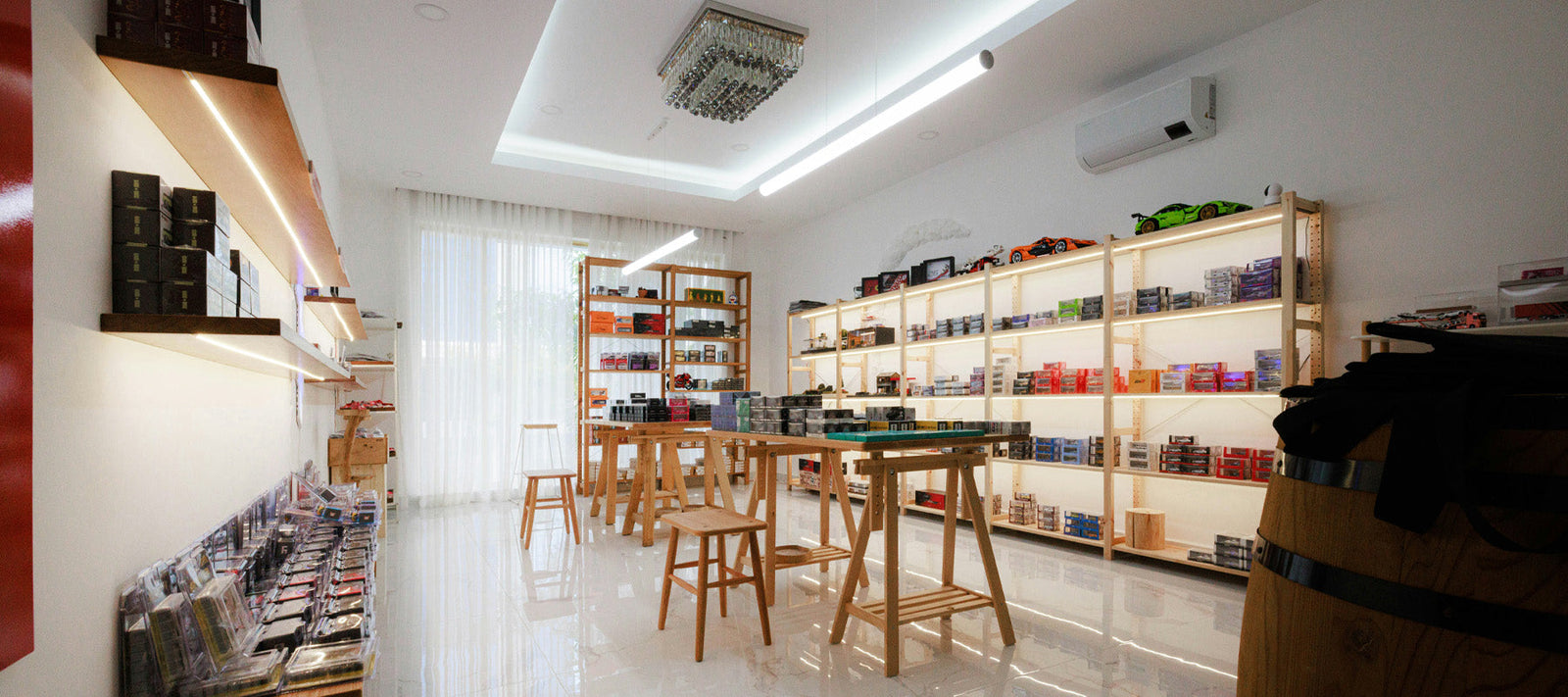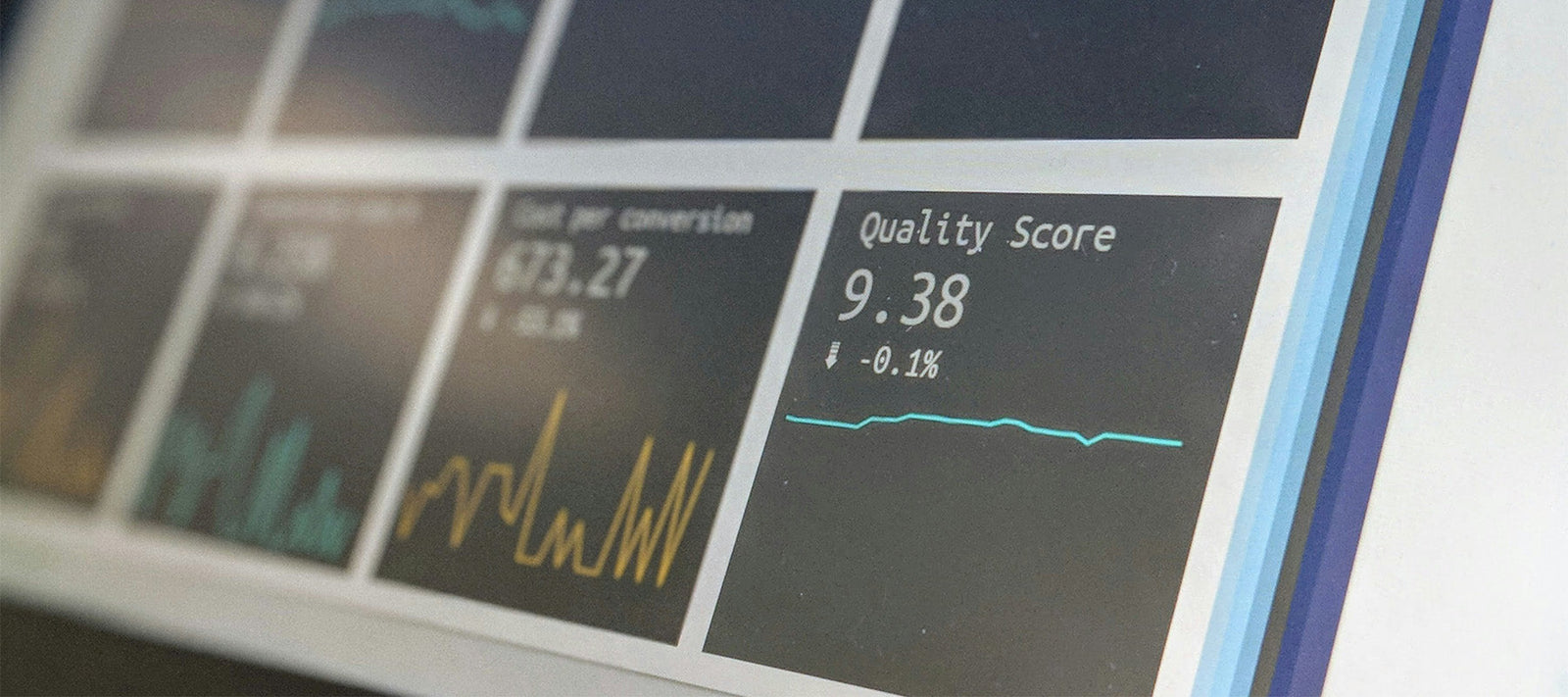As environmental concerns continue to rise, sustainability has become a key focus across various industries, including retail. In the world of retail display design, embracing sustainability isn't just about meeting consumer expectations; it's about making responsible choices that contribute to the well-being of the planet. Sustainable retail displays can enhance brand reputation, reduce environmental impact, and appeal to a growing demographic of eco-conscious consumers. Here's how retailers can embrace sustainability in their display designs.
Opt for Sustainable Materials
One of the most impactful ways to create eco-friendly retail displays is by choosing sustainable materials. Traditional display materials like plastic and non-recyclable composites have a significant environmental footprint, so switching to more sustainable alternatives can make a big difference.
- Recycled and Recyclable Materials: Use materials that have been recycled or can be recycled after use. Recycled cardboard, reclaimed wood, and metal are excellent choices that offer durability and versatility while reducing waste.
- Biodegradable Materials: For temporary displays, biodegradable materials like bamboo, jute, or cornstarch-based plastics are ideal. These materials break down naturally over time, minimising their impact on the environment.
- Sustainable Wood: If wood is required, ensure it’s sourced from sustainably managed forests. Look for certifications like the Forest Stewardship Council (FSC) to ensure the wood is harvested in an environmentally responsible manner.
- Eco-friendly Inks and Paints: Use water-based or vegetable-based inks and paints instead of traditional solvent-based options. These eco-friendly alternatives reduce harmful emissions and are less toxic to both the environment and workers.
Design for Longevity and Reusability
Sustainability in retail display design also means thinking long-term. Instead of creating displays that are used once and discarded, consider designs that can be reused or repurposed.
- Modular Displays: Modular designs allow components to be reconfigured and reused for different promotions or seasons. This flexibility reduces the need for new materials and lowers waste.
- Durable Construction: Invest in high-quality materials and construction methods that ensure displays are durable and can withstand repeated use. A well-made display can serve multiple campaigns or seasons with minimal wear and tear.
- Timeless Design: Aim for a timeless aesthetic that won’t quickly go out of style. Classic, versatile designs are more likely to be reused, extending the life of the display and reducing waste.
- Adaptable Elements: Incorporate interchangeable elements, like removable graphics or adjustable shelving, that can be easily updated or customised for different promotions without the need to create entirely new displays.
Minimise Waste and Promote Recycling
Waste reduction is a core principle of sustainable design. By minimising waste and promoting recycling, retailers can significantly reduce their environmental impact.
- Efficient Use of Materials: Design displays to maximise material usage, minimising off-cuts and waste during production. Computer-aided design (CAD) software can help optimize layouts to reduce excess material.
- Recycling Programs: Establish in-store recycling programs for old displays. Encourage customers and staff to recycle display materials appropriately, ensuring that they don’t end up in landfills.
- Use of Pre-owned Materials: Consider using pre-owned or vintage materials for display construction. Not only does this reduce demand for new resources, but it also adds a unique, authentic touch to the display.
- Waste Management: Collaborate with suppliers and manufacturers who prioritise sustainable practices, including responsible waste management. Ensure that any waste generated during production is recycled or disposed of in an environmentally friendly manner.
Incorporate Energy-Efficient Lighting and Technology
Lighting is a crucial element in retail displays, but traditional lighting solutions can be energy-intensive. By incorporating energy-efficient lighting and technology, retailers can reduce their carbon footprint and lower energy costs.
- LED Lighting: Switch to LED lighting, which uses significantly less energy than traditional incandescent bulbs and has a longer lifespan. LEDs are available in a variety of colours and intensities, making them suitable for various display needs.
- Solar-Powered Displays: For outdoor or temporary displays, consider solar-powered lighting solutions. Solar panels can harness renewable energy, reducing reliance on the grid and lowering overall energy consumption.
- Smart Lighting Controls: Implement smart lighting systems that can be programmed to dim, turn off, or adjust based on the time of day or ambient light levels. This reduces energy usage and ensures displays are illuminated only when necessary.
- Interactive and Digital Displays: While digital displays can be energy-intensive, newer technologies offer more energy-efficient options. Choose displays that use less power or have standby modes to reduce energy consumption when not in use.
Tell Your Sustainability Story
Today’s consumers are increasingly interested in supporting brands that align with their values, including sustainability. Use your retail displays as a platform to communicate your commitment to the environment.
- Eco-friendly Signage: Include signage that highlights the sustainable aspects of your displays, such as the use of recycled materials or energy-efficient lighting. This not only informs customers but also enhances your brand’s eco-friendly image.
- Storytelling Elements: Use storytelling to connect your sustainability efforts with your brand’s values. Share the journey of how the display was made, the sustainable practices involved, and the positive impact it has on the environment.
- Transparency: Be transparent about your sustainability goals and the steps you’re taking to achieve them. Consumers appreciate honesty and are more likely to support brands that are upfront about their sustainability efforts.
- Interactive Displays: Incorporate interactive elements that educate customers about sustainability, such as touchscreens with information about your eco-friendly practices or QR codes linking to detailed stories online.
Collaborate with Sustainable Partners
Sustainability is a collaborative effort. By working with partners who share your commitment to the environment, you can enhance the sustainability of your retail displays.
- Sustainable Suppliers: Choose suppliers who prioritise sustainability in their materials and processes. Look for those who offer eco-friendly options, minimise waste, and have certifications like FSC or Cradle to Cradle.
- Green Manufacturers: Work with manufacturers who use sustainable practices in production, such as reducing energy consumption, recycling waste, and using non-toxic materials.
- Local Sourcing: Whenever possible, source materials and products locally. This reduces the carbon footprint associated with transportation and supports the local economy.
- Sustainable Packaging: If your displays include packaged products, ensure that the packaging is also sustainable. Use recyclable or biodegradable materials and minimise unnecessary packaging.
Incorporate Nature and Biophilic Design
Biophilic design, which incorporates natural elements into the built environment, can enhance the sustainability and appeal of your retail displays. This design approach not only promotes well-being but also strengthens the connection between your brand and nature.
- Living Plants: Integrate living plants into your displays to create a natural, refreshing atmosphere. Plants not only enhance the aesthetic but also improve air quality and promote a sense of well-being.
- Natural Textures and Colours: Use materials that mimic natural textures, such as wood grain, stone, or natural fibers, to create a warm and inviting display. Earthy colours and organic shapes can evoke a connection to nature and reinforce the sustainability theme.
- Water Features: For larger installations, consider incorporating small water features or elements that mimic the flow of water. This can create a calming effect and draw attention to your display.
- Natural Lighting: If possible, position displays near natural light sources. Natural light not only reduces the need for artificial lighting but also enhances the appearance of the displayed items.
Embracing sustainability in retail display design is not just a trend; it’s a necessary shift towards more responsible and ethical practices. By choosing sustainable materials, designing for longevity, minimising waste, using energy-efficient technology, and telling your sustainability story, you can create displays that are not only visually appealing but also environmentally friendly. As consumer demand for sustainability continues to grow, retailers who prioritise eco-friendly practices will stand out, build stronger customer relationships, and contribute positively to the planet. By making sustainability a core part of your retail display strategy, you can create impactful, beautiful displays that resonate with today’s environmentally conscious shoppers.
Opt for Sustainable Materials
One of the most impactful ways to create eco-friendly retail displays is by choosing sustainable materials. Traditional display materials like plastic and non-recyclable composites have a significant environmental footprint, so switching to more sustainable alternatives can make a big difference.
- Recycled and Recyclable Materials: Use materials that have been recycled or can be recycled after use. Recycled cardboard, reclaimed wood, and metal are excellent choices that offer durability and versatility while reducing waste.
- Biodegradable Materials: For temporary displays, biodegradable materials like bamboo, jute, or cornstarch-based plastics are ideal. These materials break down naturally over time, minimising their impact on the environment.
- Sustainable Wood: If wood is required, ensure it’s sourced from sustainably managed forests. Look for certifications like the Forest Stewardship Council (FSC) to ensure the wood is harvested in an environmentally responsible manner.
- Eco-friendly Inks and Paints: Use water-based or vegetable-based inks and paints instead of traditional solvent-based options. These eco-friendly alternatives reduce harmful emissions and are less toxic to both the environment and workers.
Design for Longevity and Reusability
Sustainability in retail display design also means thinking long-term. Instead of creating displays that are used once and discarded, consider designs that can be reused or repurposed.
- Modular Displays: Modular designs allow components to be reconfigured and reused for different promotions or seasons. This flexibility reduces the need for new materials and lowers waste.
- Durable Construction: Invest in high-quality materials and construction methods that ensure displays are durable and can withstand repeated use. A well-made display can serve multiple campaigns or seasons with minimal wear and tear.
- Timeless Design: Aim for a timeless aesthetic that won’t quickly go out of style. Classic, versatile designs are more likely to be reused, extending the life of the display and reducing waste.
- Adaptable Elements: Incorporate interchangeable elements, like removable graphics or adjustable shelving, that can be easily updated or customised for different promotions without the need to create entirely new displays.
Minimise Waste and Promote Recycling
Waste reduction is a core principle of sustainable design. By minimising waste and promoting recycling, retailers can significantly reduce their environmental impact.
- Efficient Use of Materials: Design displays to maximise material usage, minimising off-cuts and waste during production. Computer-aided design (CAD) software can help optimize layouts to reduce excess material.
- Recycling Programs: Establish in-store recycling programs for old displays. Encourage customers and staff to recycle display materials appropriately, ensuring that they don’t end up in landfills.
- Use of Pre-owned Materials: Consider using pre-owned or vintage materials for display construction. Not only does this reduce demand for new resources, but it also adds a unique, authentic touch to the display.
- Waste Management: Collaborate with suppliers and manufacturers who prioritise sustainable practices, including responsible waste management. Ensure that any waste generated during production is recycled or disposed of in an environmentally friendly manner.
Incorporate Energy-Efficient Lighting and Technology
Lighting is a crucial element in retail displays, but traditional lighting solutions can be energy-intensive. By incorporating energy-efficient lighting and technology, retailers can reduce their carbon footprint and lower energy costs.
- LED Lighting: Switch to LED lighting, which uses significantly less energy than traditional incandescent bulbs and has a longer lifespan. LEDs are available in a variety of colours and intensities, making them suitable for various display needs.
- Solar-Powered Displays: For outdoor or temporary displays, consider solar-powered lighting solutions. Solar panels can harness renewable energy, reducing reliance on the grid and lowering overall energy consumption.
- Smart Lighting Controls: Implement smart lighting systems that can be programmed to dim, turn off, or adjust based on the time of day or ambient light levels. This reduces energy usage and ensures displays are illuminated only when necessary.
- Interactive and Digital Displays: While digital displays can be energy-intensive, newer technologies offer more energy-efficient options. Choose displays that use less power or have standby modes to reduce energy consumption when not in use.
Tell Your Sustainability Story
Today’s consumers are increasingly interested in supporting brands that align with their values, including sustainability. Use your retail displays as a platform to communicate your commitment to the environment.
- Eco-friendly Signage: Include signage that highlights the sustainable aspects of your displays, such as the use of recycled materials or energy-efficient lighting. This not only informs customers but also enhances your brand’s eco-friendly image.
- Storytelling Elements: Use storytelling to connect your sustainability efforts with your brand’s values. Share the journey of how the display was made, the sustainable practices involved, and the positive impact it has on the environment.
- Transparency: Be transparent about your sustainability goals and the steps you’re taking to achieve them. Consumers appreciate honesty and are more likely to support brands that are upfront about their sustainability efforts.
- Interactive Displays: Incorporate interactive elements that educate customers about sustainability, such as touchscreens with information about your eco-friendly practices or QR codes linking to detailed stories online.
Collaborate with Sustainable Partners
Sustainability is a collaborative effort. By working with partners who share your commitment to the environment, you can enhance the sustainability of your retail displays.
- Sustainable Suppliers: Choose suppliers who prioritise sustainability in their materials and processes. Look for those who offer eco-friendly options, minimise waste, and have certifications like FSC or Cradle to Cradle.
- Green Manufacturers: Work with manufacturers who use sustainable practices in production, such as reducing energy consumption, recycling waste, and using non-toxic materials.
- Local Sourcing: Whenever possible, source materials and products locally. This reduces the carbon footprint associated with transportation and supports the local economy.
- Sustainable Packaging: If your displays include packaged products, ensure that the packaging is also sustainable. Use recyclable or biodegradable materials and minimise unnecessary packaging.
Incorporate Nature and Biophilic Design
Biophilic design, which incorporates natural elements into the built environment, can enhance the sustainability and appeal of your retail displays. This design approach not only promotes well-being but also strengthens the connection between your brand and nature.
- Living Plants: Integrate living plants into your displays to create a natural, refreshing atmosphere. Plants not only enhance the aesthetic but also improve air quality and promote a sense of well-being.
- Natural Textures and Colours: Use materials that mimic natural textures, such as wood grain, stone, or natural fibers, to create a warm and inviting display. Earthy colours and organic shapes can evoke a connection to nature and reinforce the sustainability theme.
- Water Features: For larger installations, consider incorporating small water features or elements that mimic the flow of water. This can create a calming effect and draw attention to your display.
- Natural Lighting: If possible, position displays near natural light sources. Natural light not only reduces the need for artificial lighting but also enhances the appearance of the displayed items.
Embracing sustainability in retail display design is not just a trend; it’s a necessary shift towards more responsible and ethical practices. By choosing sustainable materials, designing for longevity, minimising waste, using energy-efficient technology, and telling your sustainability story, you can create displays that are not only visually appealing but also environmentally friendly. As consumer demand for sustainability continues to grow, retailers who prioritise eco-friendly practices will stand out, build stronger customer relationships, and contribute positively to the planet. By making sustainability a core part of your retail display strategy, you can create impactful, beautiful displays that resonate with today’s environmentally conscious shoppers.






